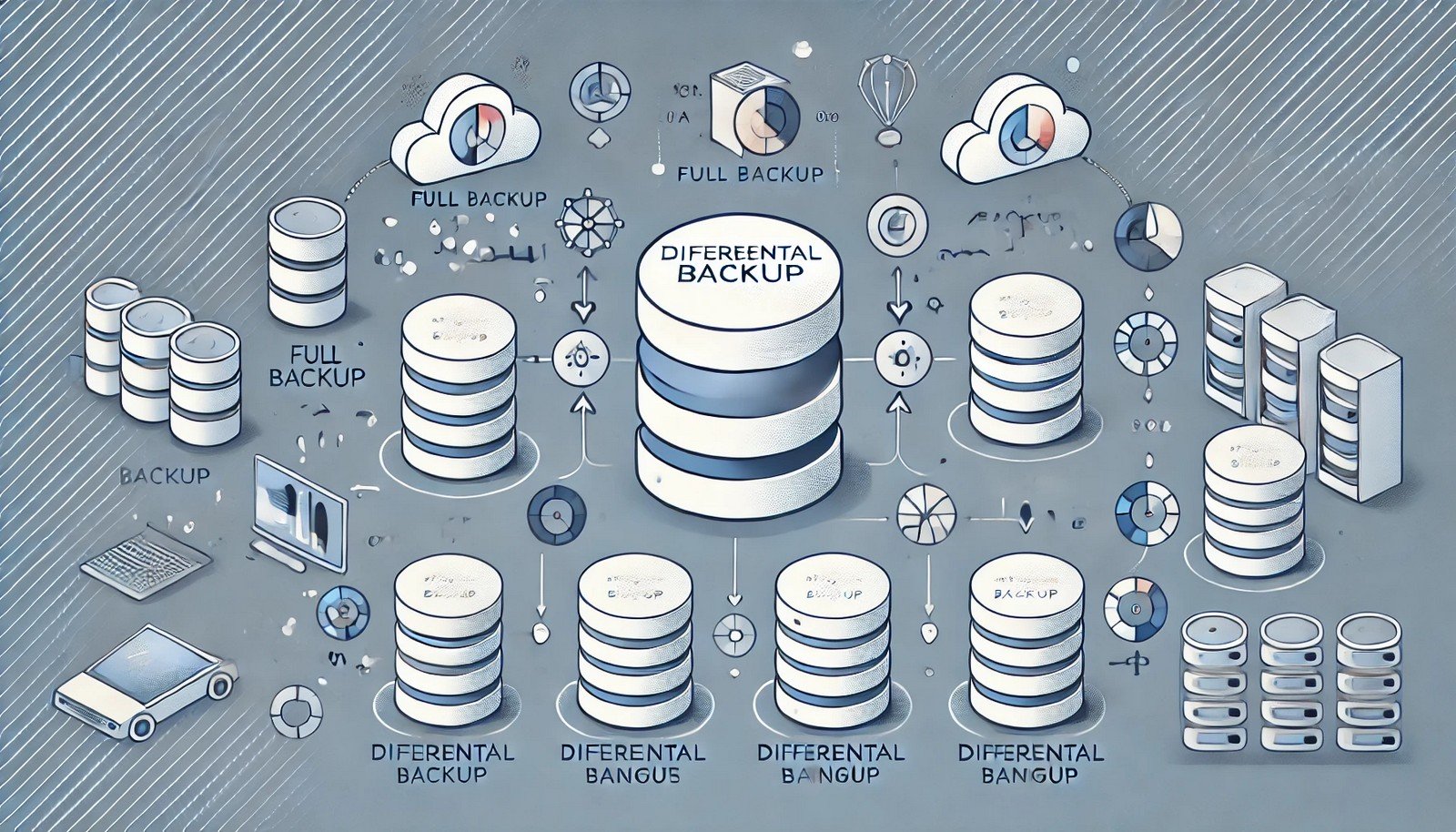Differential Backup
 (Representational Image | Source: Dall-E)
(Representational Image | Source: Dall-E)
Quick Navigation:
- Differential Backup Definition
- Differential Backup Explained Easy
- Differential Backup Origin
- Differential Backup Etymology
- Differential Backup Usage Trends
- Differential Backup Usage
- Differential Backup Examples in Context
- Differential Backup FAQ
- Differential Backup Related Words
Differential Backup Definition
A differential backup is a type of data backup that captures only the changes made since the last full backup. Unlike incremental backups, which store only the changes since the most recent backup (whether full or incremental), a differential backup saves all changes since the last full backup. This approach provides a balance between backup speed and restore efficiency, as restoring data requires only the last full backup and the latest differential backup.
Differential Backup Explained Easy
Imagine you clean your room completely on Monday and take a picture of it. On Tuesday, you leave some toys on the floor and take another picture, but instead of saving everything again, you only save the new mess. On Wednesday, you add a book on the table, and you save that change too. When you want to restore your room, you just need the Monday picture and the latest one you took. This is how differential backup works—it keeps track of all changes since the last full backup.
Differential Backup Origin
The concept of differential backup emerged alongside the development of computer storage management. As storage demands increased in the 1980s and 1990s, IT professionals sought efficient ways to back up data without duplicating everything daily. The differential method was introduced as a compromise between full and incremental backups, improving recovery speed while minimizing storage needs.
Differential Backup Etymology
The term "differential backup" comes from the word "differential," meaning the difference between two states. In this case, it refers to the difference between the current data state and the last full backup.
Differential Backup Usage Trends
Differential backups have been widely used in enterprise environments where frequent backups are necessary but full backups are too time-consuming. With advancements in cloud storage, many backup solutions incorporate differential strategies to optimize bandwidth and storage costs. Small and medium-sized businesses also use differential backups to ensure quick recovery without excessive data redundancy.
Differential Backup Usage
- Formal/Technical Tagging:
- Data Backup
- Disaster Recovery
- Storage Management - Typical Collocations:
- "differential backup strategy"
- "restore from differential backup"
- "differential backup vs incremental backup"
- "scheduled differential backup"
Differential Backup Examples in Context
- A company performs a full backup on Sundays and differential backups every night to ensure minimal data loss.
- Cloud storage providers optimize space by implementing differential backup techniques.
- IT administrators prefer differential backups when frequent data changes occur but quick restoration is required.
Differential Backup FAQ
- What is a differential backup?
A differential backup saves all changes made since the last full backup. - How does a differential backup differ from an incremental backup?
A differential backup records all changes since the last full backup, while an incremental backup saves only the changes since the most recent backup (whether full or incremental). - How often should I perform a differential backup?
It depends on your data update frequency, but daily differential backups combined with weekly full backups are common. - What are the advantages of differential backups?
They provide faster recovery than incremental backups while requiring less storage than full backups. - Do differential backups take up a lot of space?
They grow in size over time but are still smaller than full backups. - Can I restore data using only a differential backup?
No, you need both the last full backup and the latest differential backup to restore data. - What industries rely on differential backups?
Businesses with large databases, cloud storage providers, and IT-managed services commonly use them. - How long does a differential backup take?
It depends on the amount of changed data but is generally faster than a full backup. - Are differential backups suitable for cloud storage?
Yes, they help reduce bandwidth and storage costs while ensuring quick recovery. - Which backup strategy is best: full, differential, or incremental?
It depends on your needs—full backups offer complete protection, differential backups balance speed and storage, and incremental backups save the most space but require longer restoration times.
Differential Backup Related Words
- Categories/Topics:
- Data Backup
- IT Security
- System Administration
Did you know?
Differential backups played a crucial role in early disaster recovery systems for banking and finance. Before cloud-based solutions, banks relied heavily on differential backups to ensure daily transaction records were preserved without excessive data duplication.
PicDictionary.com is an online dictionary in pictures. If you have questions or suggestions, please reach out to us on WhatsApp or Twitter.Authors | Arjun Vishnu | @ArjunAndVishnu

I am Vishnu. I like AI, Linux, Single Board Computers, and Cloud Computing. I create the web & video content, and I also write for popular websites.
My younger brother, Arjun handles image & video editing. Together, we run a YouTube Channel that's focused on reviewing gadgets and explaining technology.



Comments powered by CComment